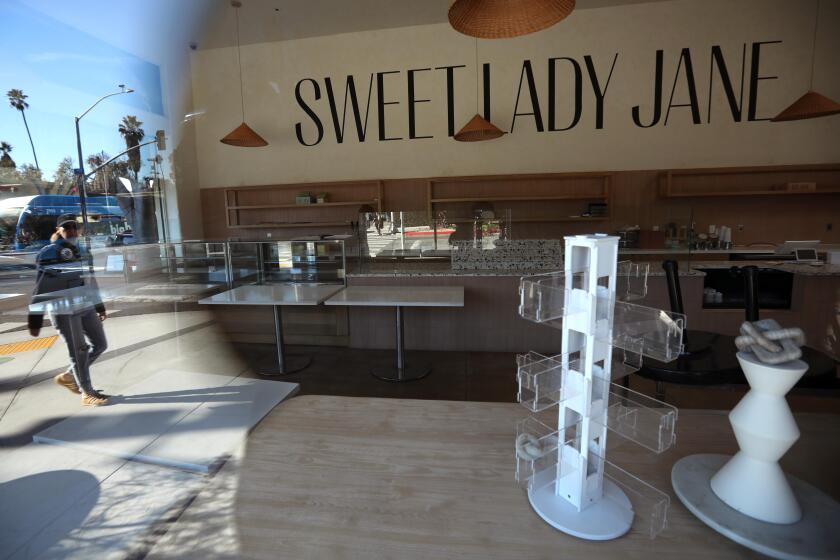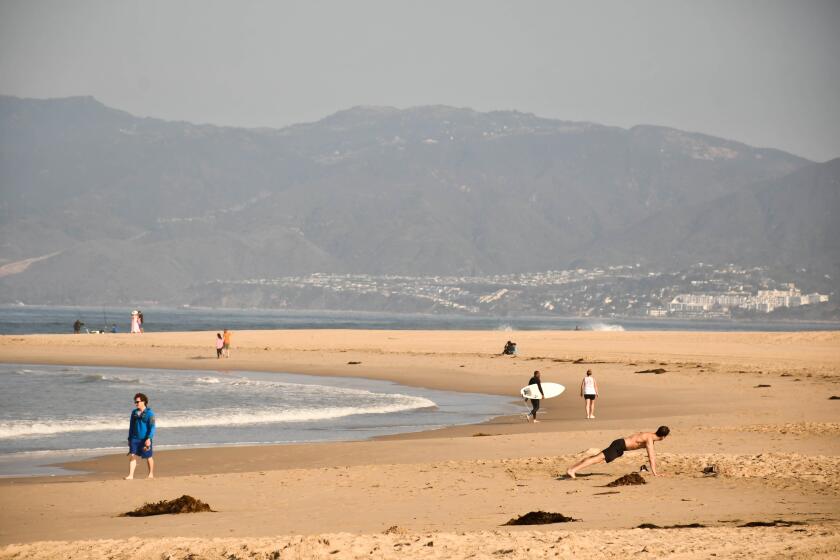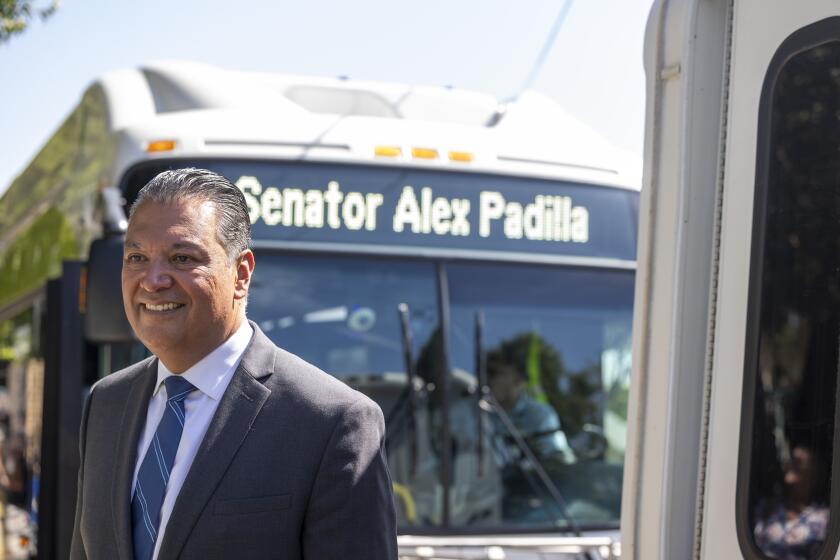Tide Turns for Historic Ferry Building
For decades, the glamour and glory of this city’s fabled Ferry Building were consigned to memory. Abandoned by commuters, wrapped in a freeway and swathed in polyester carpet and acoustical tiles, the onetime symbol of the city had faded.
The building that was once a transportation hub second only to London’s Charing Cross Station, where 50 million people each year set out on journeys, whose graceful clock tower became synonymous with San Francisco, had outlived its golden age.
Until now.
San Francisco is bringing its Ferry Building back to life. Soon, the thousands of commuters and tourists who cross San Francisco Bay by ferry each day will pass through the restored landmark. In place of the maze of bland, beige corridors that now shunts them from the dock and dumps them on the street, travelers will find a soaring, light-filled space.
“The Ferry Building is one of the most beautiful buildings set where the city’s edge meets the waterfront,” said Aaron Peskin, president of the Telegraph Hill Dwellers Assn. “It has witnessed the growth of the city around it, and it truly is a city landmark.”
That landmark is part of a major push to redevelop San Francisco’s once-busy waterfront. Projects along the 7.5-mile stretch include the wildly successful Pac Bell Park, a public plaza in front of the Ferry Building, renovated piers and sheds along the Embarcadero, a new cruise ship dock and new ferry terminals to accommodate the area’s growing population.
The rebirth of the Ferry Building and its surroundings has been spurred by political maneuvering, a booming economy and a nudge from the 1989 Loma Prieta earthquake, all of which are beginning to reverse decades of neglect. Ten years of planning and discussion led to the wide-scale renovations, which have earned both praise and reproach from residents.
“When people think of the waterfront, they think of ships in the harbor and a busy port, even though that hasn’t been the case for a long time,” said Paul Osmundson, director of planning and development for the Port of San Francisco. “Now we’ve got this opportunity to rebuild the area, so people are excited.”
And skeptical. With nearly a dozen projects pending, some residents worry that the area’s rich maritime history will be lost in the rush to rebuild and reap profits.
“We have done a balancing act--a very precarious one at times--between the scale of development that San Francisco wants to see in its waterfront and what the economic realities of such a project require we do,” Osmundson said. “But this is the psychological and emotional heart of the city, and it’s the physical center of the waterfront, so what we do here is very important for the city.”
The waterfront has always been this city’s heart and, once it was built, the Ferry Building became its soul. Its rocky history mirrored the city’s.
The building, originally christened as the Union Depot and Ferry House, was completed in 1898 at a cost of $1 million. Construction took more than two years, including six months during which contractors stopped work to sue and countersue each other. Eight years later, firefighters saved the building from the fierce flames that followed the crippling earthquake. As the city rebuilt, the sweep and scale of the building, 660 feet of arches and columns topped by a 240-foot clock tower, became a symbol of hope to survivors. It also became the nexus of all travel in the city for the next two decades, as ferries crossed San Francisco Bay and sent passengers to Oakland, Berkeley and Marin County. Many connected to railroad lines, which took passengers across the nation.
But what the 1906 earthquake couldn’t do, two steel spans across the bay could. Within years of the 1936 completion of the San Francisco-Oakland Bay Bridge and the 1937 opening of the Golden Gate Bridge, the Ferry Building and the sturdy boats that served it were nearly empty.
In 1957, city leaders added insult to injury when the multi-tiered Embarcadero Freeway cast its shadow on the Ferry Building and cut it off from view.
“That thing blocked the Ferry Building for more than 40 years,” said Charles Fracchia, president of the San Francisco Historical Society and author of several books about the city. When the city tore the freeway down after it was severely damaged in the 1989 earthquake, residents celebrated.
“That change was absolutely incredible,” Fracchia said. “Ever since they put the freeway up, people were yelling and complaining. Now that it’s gone, the difference is night and day.”
That also could describe the disparate views of city, state and local agencies and activist groups that have weighed in on the future of the waterfront and its potential.
Some want to draw tourists, who pump more than $6 billion into the city’s economy each year. Many local residents long excluded from the area want plenty of public spaces. Others worry that a hurried face lift will erase all traces of the waterfront’s history.
“We’re talking redevelopment versus restoration,” said Charles Chase, president of San Francisco Architectural Heritage. A dizzying variety of groups has weighed in on the waterfront projects.
Referring to all the organizations offering input on development plans, Jennifer Clary of the urban environmental organization San Francisco Tomorrow said: “Yes, it’s how we do things here.
“We need to make sure there is room for people down there. . . . We want something that brings the people to the water, and the bay to the city,” she said.
Plans for the Ferry Building, which is on the National Register of Historic Places, include restoring its once-elegant interior. A courtyard topped by a lattice of skylights would be unearthed from the maze of offices added in the 1960s and ‘70s. The resulting three-story gallery would be a light-filled atrium with restaurants and shops. The upper floors would continue to be leased as office space. The work is scheduled to be completed in 2002.
All of which leaves Roy Fross, who used to crank the winch to wind the ferry’s clock, shaking his head.
“This used to be the busiest port,” the 80-year-old Fross said. “Then the container ships came and it faded.”
Plans to reuse the area are well and good, he said, but they miss the mark.
“You’ll never see major marine uses there again. . . . I suppose it’s nice, all that they’re planning, but it’s sad. It’s all going, and it’s too bad.”
More to Read
Sign up for Essential California
The most important California stories and recommendations in your inbox every morning.
You may occasionally receive promotional content from the Los Angeles Times.






